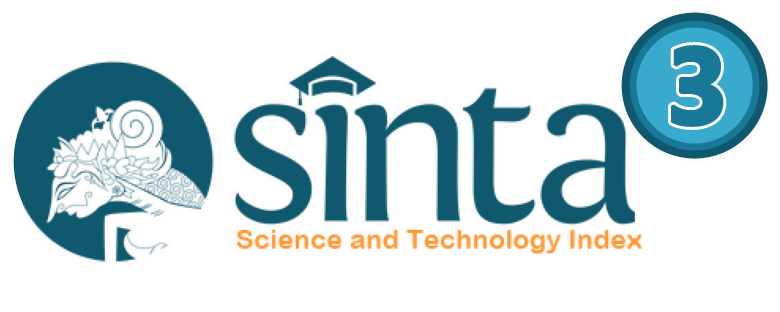The Effect of Using TikTok on Z Generation Etiquette
DOI:
https://doi.org/10.18326/ijip.v4i2.47Keywords:
Z generation, ethical change, 2022 journalistic studentsAbstract
Social media has many uses, ranging from creating video content, and spreading information or news, to even making money. However, ticktock use may also have a negative effect on the user if not used wisely, such as a TikTok application used by teens to judge content they do not like. Hence the often effect that comes upon adolescents especially the z generation is their change of ethics in real life. The purpose of this study is to know the effect that TikTok use has on 2022 journalistic and non-sense that there is or will not be the effect that online personality ticktock usage has on its real life. This research is done using qualitative methods, where it employs analysis or conclusion by combining and collecting data. The result is that some 2022 journalistic students are affected by the excessive use of TikTok which has an impact on their ethics in real life from speaking, lifestyle, and so on. And based on our research, it can be concluded that the use of a TikTok application has indeed had some negative effects on one of the many ethical changes in youth, especially the Z generation. The most frequent change is laziness in any case and the shaping of a lifestyle.
References
N. Wijaya and L. S. Setyo Utami, “Pengaruh Penyampaian Informasi pada Aplikasi TikTok terhadap Perilaku Konsumtif Generasi Z,” J. Prologia, vol. 5, no. 2, p. 267, Sep. 2021, doi: 10.24912/pr.v5i2.10171.
D. P. R. Adawiyah, “Pengaruh Penggunaan Aplikasi TikTok Terhadap Kepercayaan Diri Remaja di Kabupaten Sampang,” J.Komunikasi, vol. 14, no. 2, pp. 135–148, Oct. 2020, doi: 10.21107/ilkom.v14i2.7504.
A. Ferniansyah, S. Nursanti, and L. Nayiroh, “PENGARUH MEDIA SOSIAL TIKTOK TERHADAP KREATIVITAS BERPIKIR GENERASI Z,” vol. 6, no. 9, 2021.
F. I. R. Firamadhina and H. Krisnani, “PERILAKU GENERASI Z TERHADAP PENGGUNAAN MEDIA SOSIAL TIKTOK: TikTok Sebagai Media Edukasi dan Aktivisme,” sswj, vol. 10, no. 2, p. 199, Feb. 2021, doi: 10.24198/share.v10i2.31443.
R. Rosnaeni, S. Sukiman, A. Muzayanati, and Y. Pratiwi, “Model-Model Pengembangan Kurikulum di Sekolah,” ED, vol. 4, no. 1, pp. 467–473, Dec. 2021, doi: 10.31004/edukatif.v4i1.1776.
Hijrah and Nurul Intan, “DAMPAK NEGATIF PEMANFAATAN APLIKASI TIK-TOK DI KALANGAN REMAJA DESA MATA IE KABUPATEN ACEH BARAT DAYA,” tanzir, pp. 275–281, Dec. 2021, doi: 10.47498/tanzir.v12i2.731.
S. M. Pratama, “PENGARUH APLIKASI TIK TOK TERHADAP EKSPRESI KOMUNIKASI MAHASISWA UNIVERSITAS ISLAM NEGERI (UIN) SUNAN AMPEL SURABAYA TAHUN 2020”.
L. M. Madhani, I. N. Bela Sari, and M. N. Ikhsan Saleh, " DAMPAK PENGGUNAAN MEDIA SOSIAL TIKTOK TERHADAP PERILAKU ISLAMI MAHASISWA DI YOGYAKARTA," vol. 3, 2021.
N. Mustaqimmah and N. D. Sari, “KONSEP DIRI GENERASI Z PENGGUNA APLIKASITIK TOK DI KABUPATEN ROKAN HULU,” vol. 9.
E. Astuti and S. Andrini, “INTENSITAS PENGGUNAAN APLIKASI TIKTOK TERHADAP PERILAKU IMITASI REMAJA,” vol. 18, 2021.
I. N. Agustyn, “DAMPAK MEDIA SOSIAL (TIK-TOK) TERHADAP KARAKTER SOPAN SANTUN SISWA KELAS VI SEKOLAH DASAR,” vol. 10, 2022.
Y. N. Bulele and T. Wibowo, “ANALISIS FENOMENA SOSIAL MEDIA DAN KAUM MILENIAL: STUDI KASUS TIKTOK,” vol. 1, 2020.
N. S. Ramdani, H. Nugraha, and A. Hadiapurwa, “POTENSI PEMANFAATAN MEDIA SOSIAL TIKTOK SEBAGAI MEDIA PEMBELAJARAN DALAM PEMBELAJARAN DARING,” akademika, vol. 10, no. 02, pp. 425–436, Dec. 2021, doi: 10.34005/akademika.v10i02.1406.
C. Dewi, “DAYA TARIK TIKTOK SEBAGAI MEDIA PEMBELAJARAN BAHASA INGGRIS ONLINE,” 2020.
N. D. Rachmania and H. B. Cahyono, “ARTIKEL PENGGUNAAN APLIKASI TIK-TOK DALAM MENUNJANG EKSISTENSI DIRI PADA REMAJA”.
A. D. Kusumandaru and F. P. Rahmawati, “Implementasi Media Sosial Aplikasi Tik Tok sebagai Media Menguatkan Literasi Sastra dalam Pembelajaran Tematik di Sekolah Dasar,” basicedu, vol. 6, no. 3, pp. 4876–4886, Apr. 2022, doi: 10.31004/basicedu.v6i3.2972.
D. Mulyana, Ilmu komunikasi suatu pengantar. Bandung: PT Remaja Rosdakarya, 2009.
B. Berman and J. R. Evans, Retail management: a strategic approach, 9. ed., Internat. ed. Upper Saddle River, NJ [Great Britain]: Pearson Prentice Hall, 2004.
A. Cooperman, E. O’Connell, and S. Stencel, “FOR FURTHER INFORMATION CONTACT: Luis Lugo,”.
L. Y. Abramson, G. I. Metalsky, and L. B. Alloy, “Hopelessness depression: A theory-based subtype of depression.,” Psychological Review, vol. 96, no. 2, pp. 358–372, Apr. 1989, doi: 10.1037/0033-295X.96.2.358.
R. Yasin, “SEJARAH PERKEMBANGAN PEMIKIRAN ETIKA,” tajpi, vol. 1, no. 2, pp. 77–86, Aug. 2018, doi: 10.34005/tahdzib.v1i2.454.
Sujarwa, Ilmu sosial & budaya dasar: manusia dan fenomena sosial budaya. Yogyakarta: Pustaka Pelajar, 2010.
S. Sarjana and N. Khayati, “PENGARUH ETIKA, PERILAKU, DAN KEPRIBADIAN TERHADAP INTEGRITAS GURU,” JPNK, vol. 1, no. 3, pp. 379–393, Mar. 2017, doi: 10.24832/jpnk.v1i3.450.
H. Wijaya, “METODE-METODE PENELITIAN DALAM PENULISAN JURNAL ILMIAH ELEKTRONIK,” Open Science Framework, preprint, Dec. 2019. doi: 10.31219/osf.io/dw7fq.
M. Tristan, T. P. Sandono, & R. F. Marta. (2019). "Disintermediasi Industri Musik Melalui Konstruksi Pengguna Akhir Most Viral Project." Ettisal: Journal Of Communication, 4(1), 33–42.
Downloads
Published
Issue
Section
License
Copyright (c) 2022 IJIP : Indonesian Journal of Islamic Psychology

This work is licensed under a Creative Commons Attribution-ShareAlike 4.0 International License.

 Indonesian Journal of Islamic Psycology is licensed under a
Indonesian Journal of Islamic Psycology is licensed under a 


